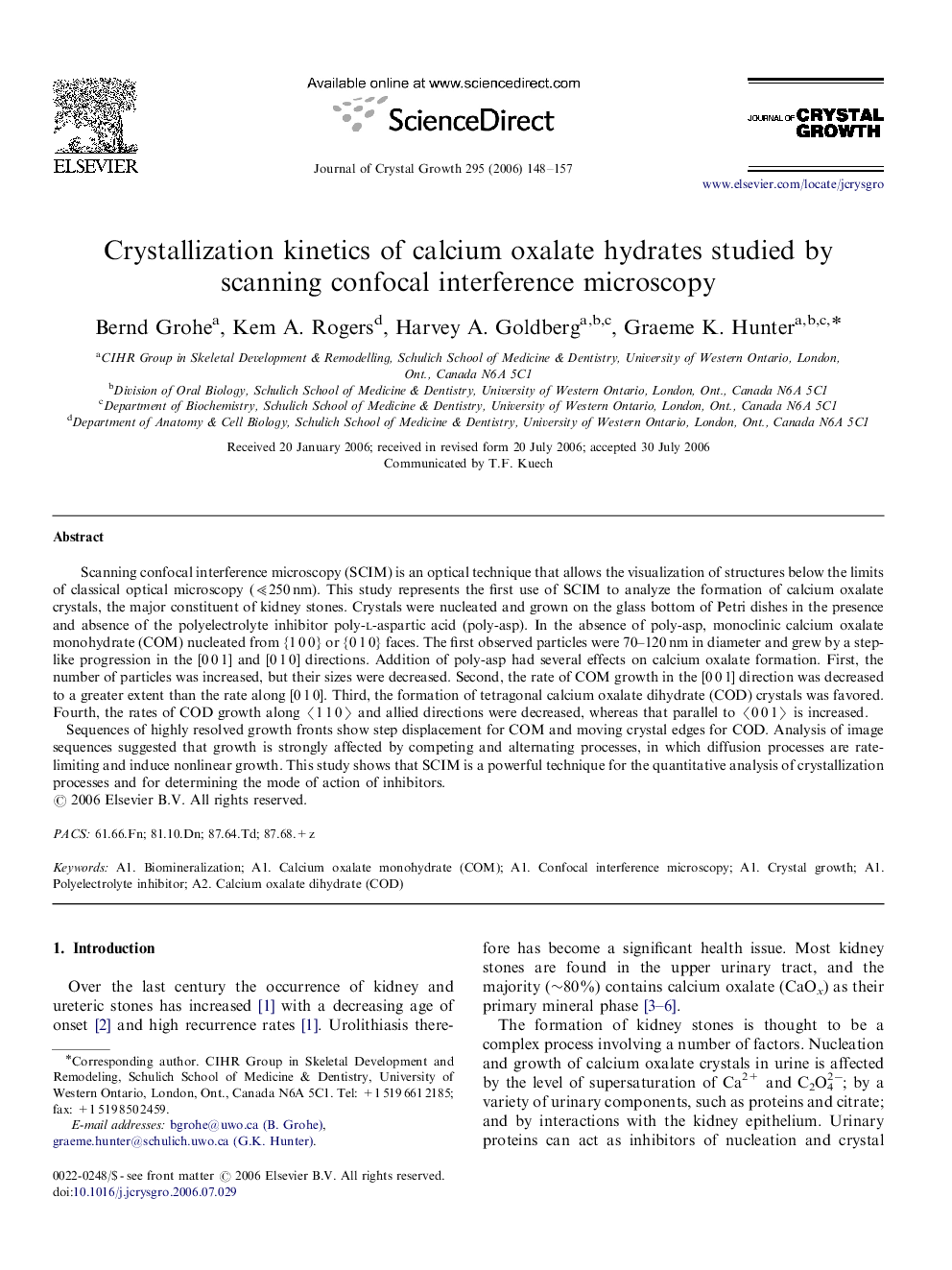| Article ID | Journal | Published Year | Pages | File Type |
|---|---|---|---|---|
| 1795745 | Journal of Crystal Growth | 2006 | 10 Pages |
Scanning confocal interference microscopy (SCIM) is an optical technique that allows the visualization of structures below the limits of classical optical microscopy (⪡250 nm). This study represents the first use of SCIM to analyze the formation of calcium oxalate crystals, the major constituent of kidney stones. Crystals were nucleated and grown on the glass bottom of Petri dishes in the presence and absence of the polyelectrolyte inhibitor poly-l-aspartic acid (poly-asp). In the absence of poly-asp, monoclinic calcium oxalate monohydrate (COM) nucleated from {1 0 0} or {0 1 0} faces. The first observed particles were 70–120 nm in diameter and grew by a step-like progression in the [0 0 1] and [0 1 0] directions. Addition of poly-asp had several effects on calcium oxalate formation. First, the number of particles was increased, but their sizes were decreased. Second, the rate of COM growth in the [0 0 1] direction was decreased to a greater extent than the rate along [0 1 0]. Third, the formation of tetragonal calcium oxalate dihydrate (COD) crystals was favored. Fourth, the rates of COD growth along 〈1 1 0〉 and allied directions were decreased, whereas that parallel to 〈0 0 1〉 is increased.Sequences of highly resolved growth fronts show step displacement for COM and moving crystal edges for COD. Analysis of image sequences suggested that growth is strongly affected by competing and alternating processes, in which diffusion processes are rate-limiting and induce nonlinear growth. This study shows that SCIM is a powerful technique for the quantitative analysis of crystallization processes and for determining the mode of action of inhibitors.
